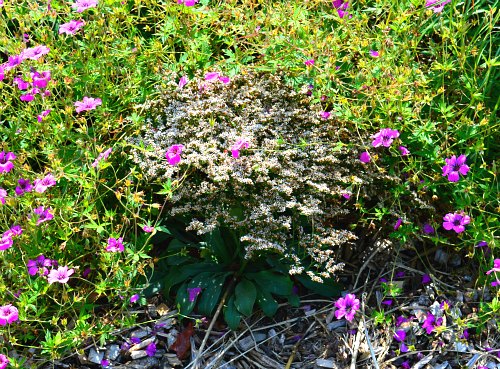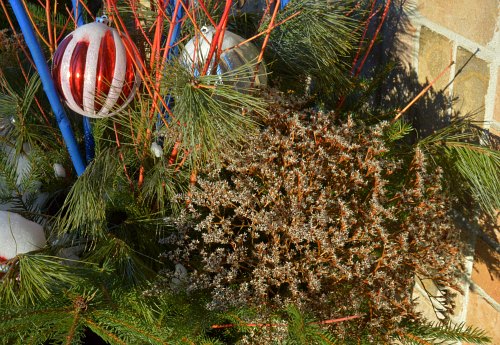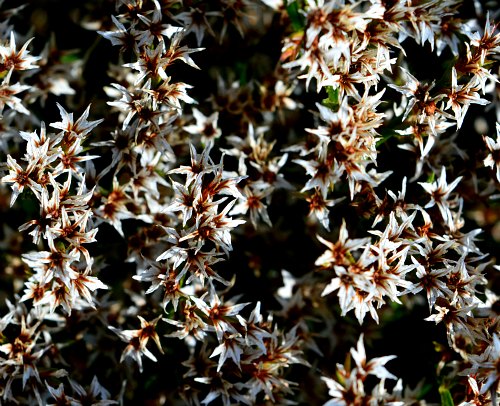Plant of the Month for February, 2016

(go-nee-oh-LY-mon ta-TAR-ee-kum)
General Information:
Goniolimon tataricum is a special plant that is not grown for its flowers, but is grown for its dried flower head. It makes very small flowers which are hardly noticeable. When the flowers fade and the petals drop, you are left with a dried flower head that is spectacular. In fact it is so nice the plant is grown for the cut flower industry.

Goniolimon tataricum; photo by Robert Pavlis
Goniolimon tataricum goes by several common names including statice, German statice and tatarian statice.
Flowers are pinkish white, but look white from a distance. After flowering in mid-summer, the remaining flower head looks good right into winter. This year I cut it off 2 weeks before Christmas and used the flower head in the holiday planter pictured below.

Goniolimon tataricum; photo by Robert Pavlis
The plant is very low growing with the evergreen leaves lying right on the ground.
Goniolimon tataricumis very similar to Limonium platyphyllum (aka Limonium latifolium) which also has the common name of German statice. Goniolimon is distinguished from Limonium by having hairy styles and capitate stigmas. G. tataricum is shorter and has smaller flowers than L. platyphyllum.
The flower heads can be left on the plant for drying, or they can be removed just before flowering and hung in a dry cool place to dry.

Goniolimon tataricum; photo by Robert Pavlis
Life Cycle: perennial
Height: 45 cm (1.5 ft) with flower
Bloom Time: mid-summer
Natural Range: Mediterranean region, Caucasus
Habitat: coastal and desert environments
Synonyms: Limonium tataricum. Limonium dumosum, Statice dumosa
Cultivation:
Light: full sun
Soil: well drained
Water: drought tolerant
USDA Hardiness Zone: (4?) 5 – 10
Propagation: seed
Seedex availability (ORG&HPS annual Seed Exchange): occasionally
